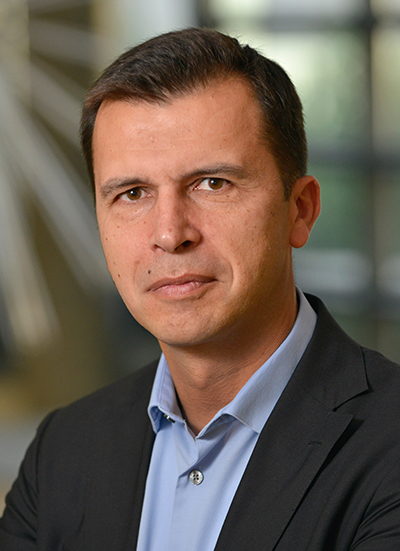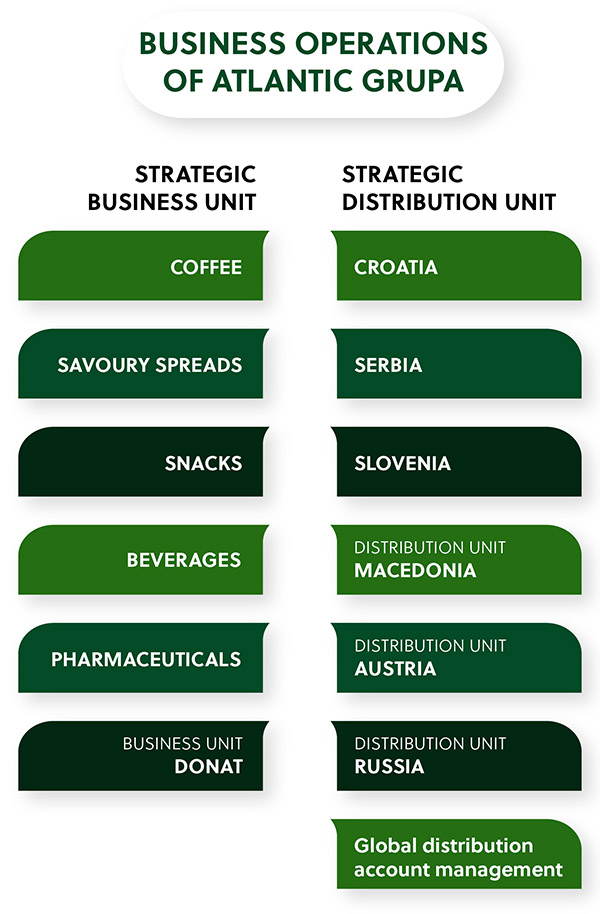
Interview: We are in the middle of a commodities super cycle


(Pic Courtesy: Danijel Banek)
Atlantic Grupa is a popular consumer goods company operating in the Adriatic region. The company’s product portfolio includes coffee, savory spreads, salty snacks, chocolate, and beverages.
The company’s commodity basket now faces a challenge from price inflation and supply issues. Beroe spoke with Danijel Banek, Executive Director of Central Procurement at Atlantic Grupa, to get a sense of how the company is managing the inflation and supply shortage situation. His team of 40 members manage a budget of about $320 million.
It was 3 p.m. in Zagreb, Croatia when Danijel received Beroe’s video call. The conversation began around the question of whether we are in the middle of a commodities super cycle and what are some of the main factors contributing to price inflation.
“Yes, I think we are in the middle of a commodities super cycle. My company is exposed to commodity price volatility because most of our product portfolio is made of either pure commodities or commodity-like materials, such as aluminum cans, which are used in packaging. The prices of green coffee, cocoa, dairy, ingredients, various types of packaging, fish, poultry, and other ingredients have all gone up. It’s a fight between inflation and consumer buying power, and we must wait and watch to see when inflation will finally overwhelm the consumer purchasing power,” Danijel told Beroe in an exclusive interview.
Danijel listed out seven reasons for the current inflationary conditions:
- The Covid-19 pandemic played the main role. The sudden closure and reopening of the global economy subsequently upended the supply chains.
- The first wave of the pandemic led to planned inventory reduction because consumption was expected to decline -- this proved otherwise when economies opened up.
- Fiscal stimulus unleashed by major countries and central banks worldwide led to the classical adage of “too much money chasing too few goods”.
- A spike in speculative trading activity of major commodities occurred.
- The change in consumer behavior, especially the rise of online shopping, led to increased packaging use, for instance.
- The Russian invasion led to the war in Ukraine.
- Fundamental reasons include droughts or flooding in some parts of the globe.
“All of the above spurred the commodities super cycle. The first signs of this were visible in early 2021, almost a year and a half ago. Now you could ask me, is there any end in sight? It will be much easier to answer this question if there were no geopolitical tensions around. It is still too early to say whether we have reached the peak of the cycle. The conflict between Russia and Ukraine is very unfortunate and until this ends it’s hard to predict when this super cycle will end,” Danijel said.
He added that according to a few research studies, there were two commodity super cycles since the end of the Second World War. The first one was in the early 70s, mainly driven by the weakening of U.S. dollar. And the second was in early 2000s when the Chinese economy started strengthening.
“The economic theories say that super cycles usually last five or more years, but it may turn out to be of shorter duration this time around. And it seems that the world is moving towards ‘stagflation’, where we would witness a drop in consumer spending. Normally, a drop in consumer spending leads to recession or at least an economic slowdown. And you certainly know that recession is never a good time for commodity price hikes. So, if recession happens, that will spell the end of this super cycle. It’s a question of when and not if,” he said.
Managing Supply and Cost
In an era of inflation and supply shortages, it becomes imperative for Procurement teams to ensure adequate supply at the best possible cost.
Danijel said that his team focused on two major targets:
- Supply Assurance: protecting supply of key production materials.
- Protecting company's performance (i.e., preventing profit erosion).
“To achieve the above two goals, we undertook several activities: the most important one was to lock-in prices at a moment when they seemed the most favorable.
“Secondly, we worked to strengthen relationships with our incumbent suppliers. A strong and deep relationship with suppliers could give you priority as a preferred customer in times of supply shortages.
“Thirdly, wherever possible, we moved away from single-source to dual or multiple sources to avoid any risk related to single-sourcing.
“Finally, we improved internal planning in terms of anticipating the market demand and planned our purchases accordingly, with the aim of protecting the company against possible shortages as well as any unplanned price increases by suppliers,” Danijel elaborated.
Seat At the Table and Hedging Against Price Risk
Atlantic Grupa remains the leading coffee producer in the Balkans and a market leader in the category of roasted and ground coffee in Slovenia, Serbia, Bosnia & Herzegovina, and North Macedonia. The company’s leading coffee brands are Barcaffè, Grand Kafa, and Bonito. The coffee business unit accounted for 21 percent of the company’s total sales of about $800 million in 2021.

(Source: Atlantic Grupa Annual Report)
Danijel said his team plays an active role in advising the business on market conditions as well as providing hedging strategies. His team is part of the company’s core “Coffee Buying Committee,” which shows the importance of the purchasing function at Atlantic Grupa.
The Procurement team of the “coffee buying committee” has two roles.
First, the team provides insights and expertise related to the supply market for green coffee. This also includes knowledge relating to the future development of the market.
Secondly, the Procurement team plays an active role in operationalizing the executive decisions taken by the committee. This could involve making bids in the market, entering into forward contracts with the suppliers, or increasing the inventories.
“We don't have a crystal ball, but we do have some powerful platforms and tools that we use for predicting the supply market trends. Apart from providing advice by our market analysts, we also use any available source of information -- it could be information coming from suppliers, or data from the commodity reports,” he said.
The company’s treasury team is involved in the hedging in the forwards and futures market both for commodities as well as currencies -- some commodities, such as green coffee, trade in U.S. dollars, while Atlantic Grupa books revenue predominantly in euros and some local currencies where it sells its products.
“The Procurement function brings in the expertise on the supply market. The treasury team helps us a lot, but they are not in direct contact with the suppliers. Procurement places contracts for buying commodities, and Treasury assists in defining the part of the contracts related to payments and implementing hedging mechanisms. It’s a collaboration between the Treasury and Procurement departments in anticipating changes in the supply market, forecasting commodity price trends, and making optimal decisions on hedging,” Danijel said.
He further added: “I think it's a great example of building a cross functional team. The committee consists of representatives from several functions such as Treasury or finance, the coffee business unit, and Procurement. We all analyze the information before making a decision. Under normal circumstances, we meet once a month, but in these turbulent times, we meet once a week -- and we discuss the current market environment. Of course, we agree on the necessary steps to be taken”.
Danijel added that his team is prepared to unwind the hedging positions as well as liquidate inventories if and when demand drops and recession hits home.
“Hedging is a double-edged sword. When you are sitting in a “long position”, you feel good when the spot prices go up. However, the same “long position” can come back to bite you when spot prices drop. It’s imperative we keep watch both on the forward as well as the spot market,” he explained.
Real Differentiation is the People
The conversation eventually veered towards the hot topic of procurement digitalization. When questioned as to whether his team uses digital tools to predict and manage price and supply risk, Danijel nodded in the affirmative.
“I do consider technology as an enabler -- however you must have a plan. The technology itself is not the competitive advantage, just like data alone is not a magic wand. It is important what you extract from data, what you extract from technology, and what decisions you make with the data and technology that you have. You can use technology in many aspects -- right from defining the best possible moment for hedging to assessing supply risks. However, when all is said and done, the real differentiation remains in the people who use the technology. After all, brains still matter. The coexistence of technology and people is the winning combination, and not the technology in itself,” Danijel concluded.
Related Insights:
View All
Get more stories like this
Subscirbe for more news,updates and insights from Beroe






